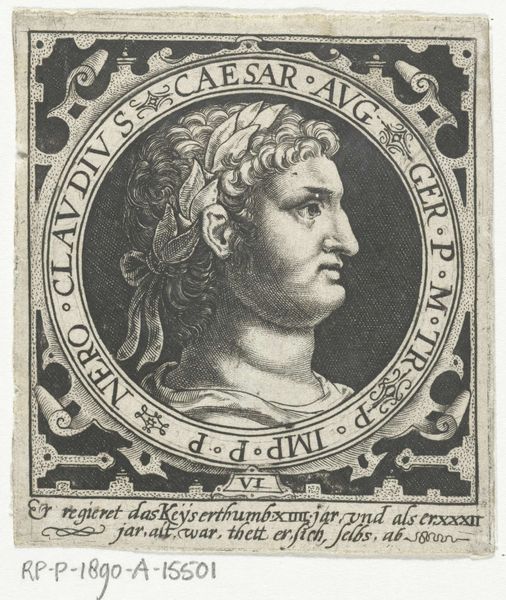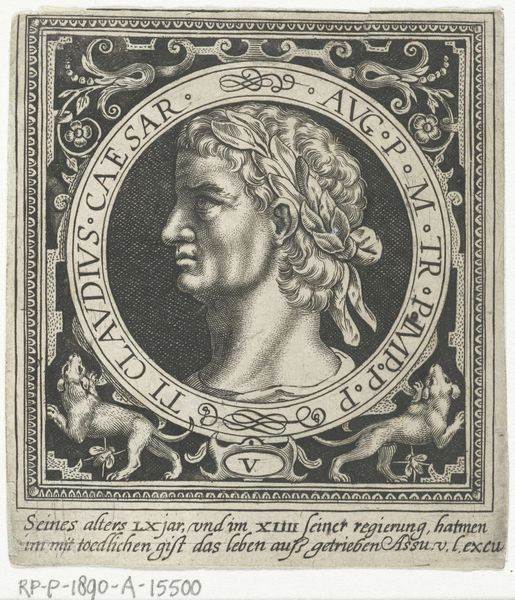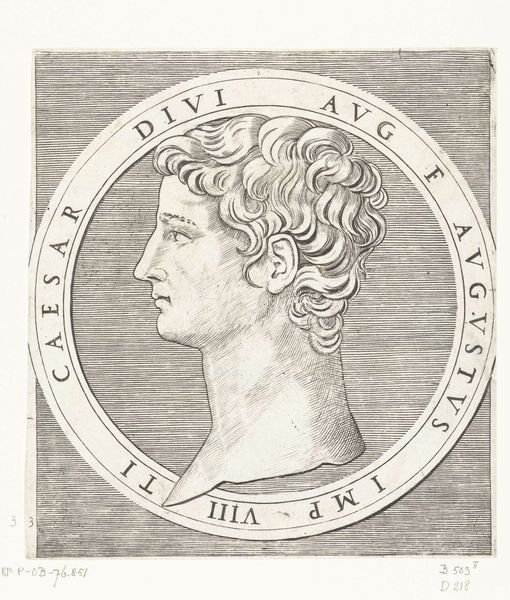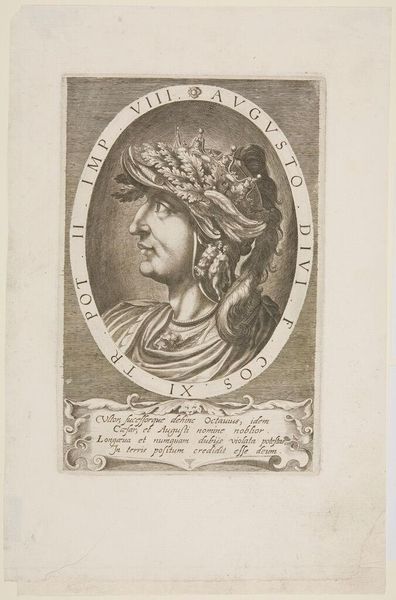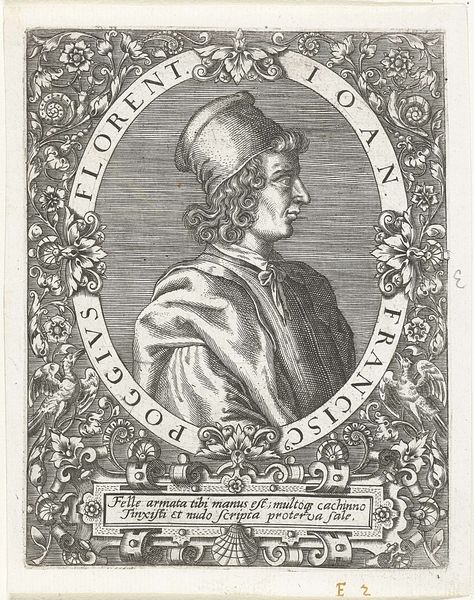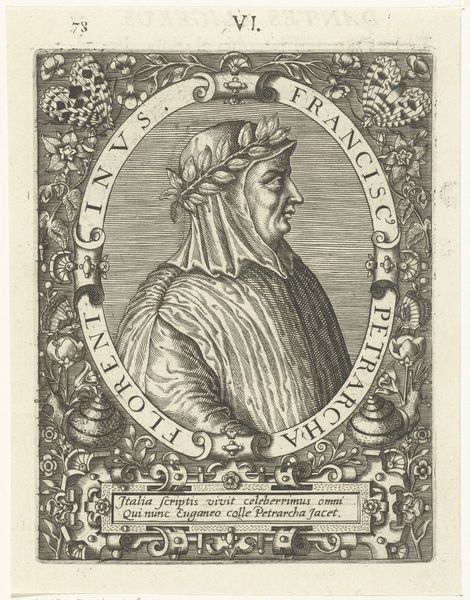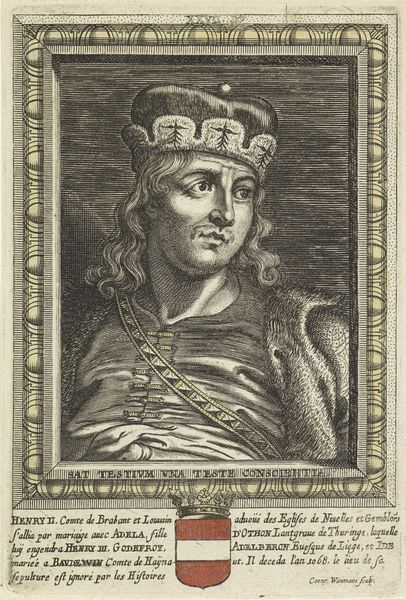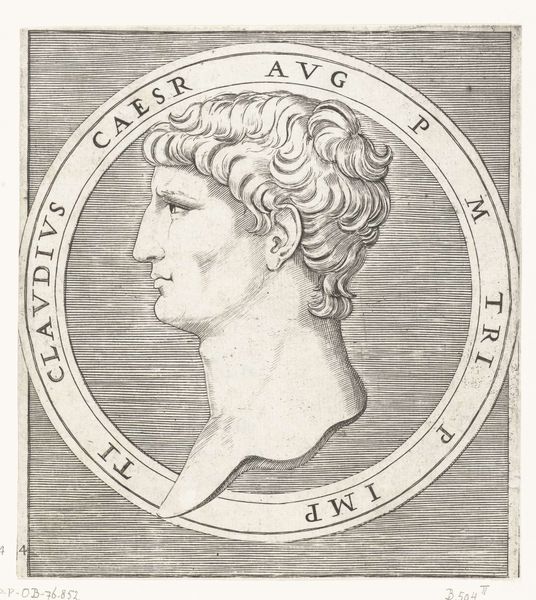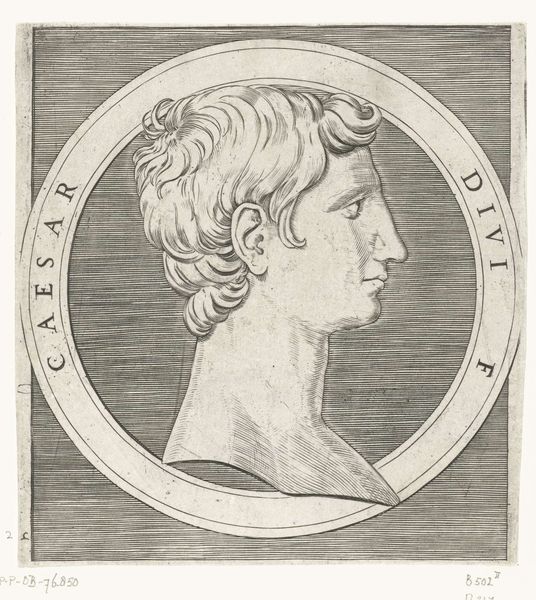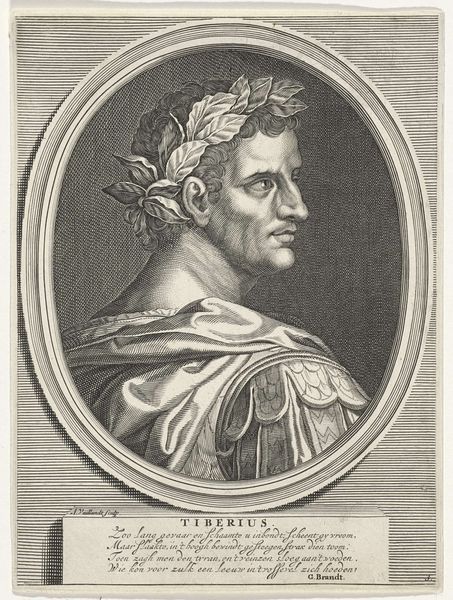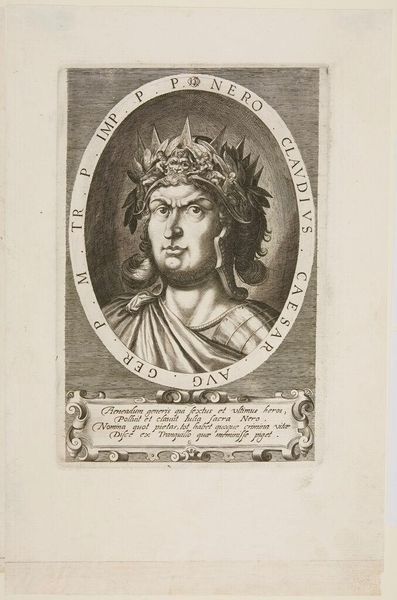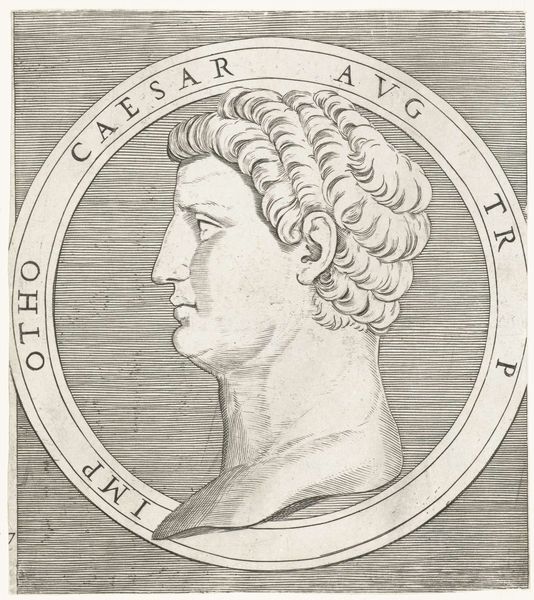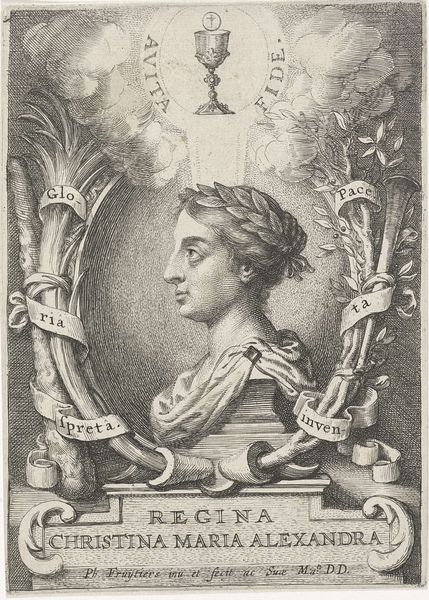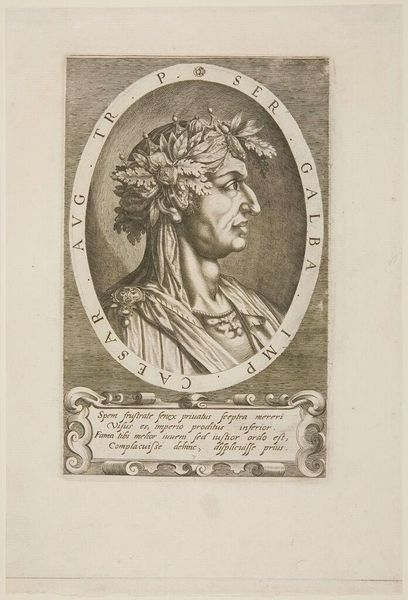
print, etching
#
portrait
# print
#
etching
#
greek-and-roman-art
#
11_renaissance
#
ancient-mediterranean
#
portrait drawing
#
history-painting
#
italian-renaissance
Dimensions: 8 5/16 x 6 1/8 in. (21.11 x 15.56 cm) (plate)
Copyright: Public Domain
Editor: Here we have Daniel Hopfer's "Medal with a Bust of Nero," created sometime between 1510 and 1520. It's an etching, so a print, and the level of detail is quite amazing! What strikes me is how this artwork embodies both power and a kind of manufactured classical grandeur. What do you make of it? Curator: I'm drawn to the etching technique itself. The act of making a print allowed for a wider circulation of Nero’s image and the concept of Roman imperial power, serving the purposes of those who commissioned or consumed such objects. Consider the Renaissance obsession with classical antiquity, and how this print, made with relatively new reproducible technology, fed into a market that simultaneously embraced craft and mass production. The material act of etching—biting into metal, then pressing ink onto paper—made this image of power available on a potentially broad scale. Does that change how you view this piece? Editor: It definitely adds a new layer! So it's not just about depicting Nero but about the accessibility of that depiction. The process becomes part of the statement itself, not just the end result. Curator: Precisely! Consider also how the surrounding decorations contribute. Are they referencing authentic Roman motifs, or are they invented, "renaissance-ified" elements? The labor involved in their creation, even if derivative, also speaks volumes. And the very concept of 'craft' in a culture where mass-produced printed matter begins to redefine labor. Editor: That makes me wonder about Hopfer’s own labor: How did he view this kind of image production, knowing it was intended for a market? Curator: An excellent question! I'd want to analyze his other prints, the context in which he worked. This would tell me more about how his artistic output participated in—or perhaps resisted—the commodification of historical imagery. Editor: So much to unpack by focusing on the materials, process, and socio-economic context! Curator: Indeed. Looking at the "how" and the "why" of creation allows us to avoid simplistic notions of representation and taste, and better grasp the cultural dynamics in play.
Comments
minneapolisinstituteofart almost 2 years ago
⋮
Daniel Hopfer designed and decorated armor in his adopted city of Augsburg, where Emperor Maximilian I kept an armor-making workshop. The battling centaurs in this etching likely came from Hopfer's repertoire of armor motifs. In the tradition of Augsburg artists, he discovered Italianate motifs early and copied them avidly. Below Nero's profile are freely sketched masks, fluted forms, and winged grotesques with a female head and bird claws.
Join the conversation
Join millions of artists and users on Artera today and experience the ultimate creative platform.
